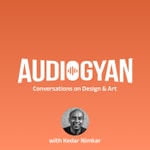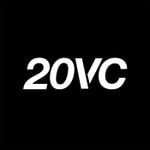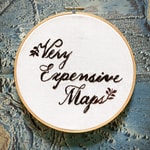The Gyaan Project – Details, episodes & analysis
Podcast details
Technical and general information from the podcast's RSS feed.

The Gyaan Project
Audiogyan
Frequency: 1 episode/9d. Total Eps: 313

Recent rankings
Latest chart positions across Apple Podcasts and Spotify rankings.
Apple Podcasts
🇬🇧 Great Britain - design
23/07/2025#95🇬🇧 Great Britain - design
22/07/2025#85🇬🇧 Great Britain - design
21/07/2025#62🇬🇧 Great Britain - design
20/07/2025#41🇨🇦 Canada - design
09/06/2025#97🇨🇦 Canada - design
08/06/2025#83🇨🇦 Canada - design
07/06/2025#70🇨🇦 Canada - design
06/06/2025#63🇨🇦 Canada - design
05/06/2025#52🇨🇦 Canada - design
04/06/2025#37
Spotify
No recent rankings available
Shared links between episodes and podcasts
Links found in episode descriptions and other podcasts that share them.
See all- https://ivm.today/android
4087 shares
- https://ivm.today/ios
3005 shares
- http://www.ivmpodcasts.com/
2097 shares
- https://twitter.com/nimkarkedar
86 shares
- https://twitter.com/audiogyan
86 shares
- https://twitter.com/nimkarkedar?s=21
44 shares
RSS feed quality and score
Technical evaluation of the podcast's RSS feed quality and structure.
See allScore global : 68%
Publication history
Monthly episode publishing history over the past years.
Ep.303 - Importance of process in architecture with Hans Brouwer
Season 8 · Episode 303
mercredi 11 septembre 2024 • Duration 48:38
Welcome to a new series, “Footprints of History”. The Drawing Board, with whom I am partnering for the 3rd consecutive year, brings this series to you. The Drawing Board is an international architecture competition based in India where students can test their understanding and skills in shaping how communities live and thrive while preserving local heritage. TDB has been actively running an Architecture competition for undergraduate students since 2016. It is conceptualised by Mindspace Architects and Rohan Builders. This year, which is the 9th edition of the competition, the design brief revolves around redesigning the Pathu Thoon Lane in Madurai (Tamil Nadu, India) also known as "10 Pillar Street”. This site is somewhere between the Meenakshi Temple and Thirumalai Nayakar Place. The design challenge is to restore and integrate the lane's cultural heritage, emphasizing these 10 pillars. The submission deadline is 16th September 2024. More details in the show notes and thedrawingboard.in
Ludwig Mies, the German-American architect, once said "Architecture is the will of an epoch translated into space.” And this quote aptly describes our today’s guest. Hans Brouwer. Hans, originally from Hong Kong, is a distinguished architect with a global footprint. He studied architecture in Switzerland and the University of Southern California, where he graduated top of his class. Hans spent his early career with Sir Norman Foster, contributing to landmark projects like the Century Tower in Tokyo and Commerzbank Headquarters in Frankfurt. In 1995, he founded HB Design, later relocating to Singapore, and expanded to regional offices in Phuket and Bangkok. An award-winning architect, Hans also teaches at the National University of Singapore and frequently speaks at industry events.
Questions- What do you see when you see the 10 Pillar Street - as an architect and as a tourist or history lover? Which aspects stand out for you?
- You have a strong emphasis on “the process”. You say this process is truly creative because the end is not known at the beginning. Can you unpack this for us?
- At HB Design, you emphasize the importance of context and site in shaping architectural outcomes. How do you balance the need for innovation with the preservation of cultural heritage in a project?
- You deeply engage with clients in the design process, how would you involve a community or stakeholders in a project like the restoration of Madurai’s Pathu Thoon Lane?
- Assuming Designers or specialists are generally aware of the pros and cons of various solutions and living on tradeoffs. Given the expertise, what amount of community involvement is apt - because, if we go and ask people, they will want faster horses while the solution could be inventing a car.
- I am very curious to know about BIM - What is building information modeling? How does it help in the process and over all practice at HB Design?
- With BIM being such an integral part of HB Design’s process, how do you see technology aiding in the preservation and restoration of culturally significant sites?
- You are working in South east Asia where we are seeing a lot of innovation with great emphasis on green infrastructure. What are a few trends in the technology and architecture industry which can be applied to this complex network of communities and historical 10 pillars?
- In the future world if AI, which faculty should young architects need to build to accept or reject AI proposals assuming they have the analog context of climate change and other challenges? Especially with AI, machines can simulate and build imaginary landscapes and more…
- https://www.hbdesign.biz/
- https://zakworldoffacades.com/speaker/hans-brouwer/
- https://www.linkedin.com/in/hans-brouwer-70b6b0a7/?originalSubdomain=sg
- https://www.designandarchitecture.com/article/hans-brouwer.html
- https://www.re-thinkingthefuture.com/architect/hb-design/
- https://www.youtube.com/watch?v=srX9bcl10MI
Ep.302 - Pillars of the Past and Present with Uday Andhare
Season 8 · Episode 302
mardi 3 septembre 2024 • Duration 45:38
Welcome to a new series, “Footprints of History”. This series is brought to you by, The Drawing Board, with whom I am partnering for the 3rd consecutive year. The Drawing Board is an international architecture competition based in India where students can test their understanding and skills in shaping how communities live and thrive while preserving local heritage. TDB has been actively running an Architecture competition for undergraduate students since 2016. It is conceptualised by Mindspace Architects and Rohan Builders. This year, the 9th edition of the competition, the design brief revolves around redesigning the Pathu Thoon Lane in Madurai (Tamil Nadu, India) also known as "10 Pillar Street”. This site is somewhere between the Meenakshi Temple and Thirumalai Nayakar Place. The design challenge is to restore and integrate the lane's cultural heritage, emphasizing these 10 pillars. The submission deadline is 16th September 2024.
Today’s episode is called, “Pillars of Past and Present”. I am pleased to have Architect Uday Andhare with us on Audiogyan. Uday has been a design principal at Indigo Architects since 1998. He holds a degree from CEPT University and the University of New Mexico. Uday advocates for technically appropriate and ecologically sensitive architecture, blending traditional wisdom with modern design. Uday teaches at CEPT University while leading his firm in Ahmedabad. He has drawn diverse experiences during his internships with B.V Doshi and while working in the USA.
Questions- What do you see when you see these 10 pillars on Pathu Thoon Lane? Which aspects stand out for you from an Intent, Material, and Context point of view?
- The Getty Podcast - B.V. Doshi said, “Is Architecture defined by theory or it’s a convention, or it is something which is rooted in the place?” What are the potentialities of such a project? Do you consider it be a restoration project or conservation or anything else?
- You have consciously chosen friendlier materials in your projects at Indigo. If one has to restore or build things around the pillars, would you build with new materials and new technology or continue with existing materials or the same fabric?
- What are the few anchor points of traditional Indian architecture that still hold relevance today? (More meta)
- Likewise, what are the few enduring aspects of Indian architecture that can inform students in this project?
- Your Philosophy is “search for contemporary rootedness in this ever-changing environment”. How do you spot it? What are the key parameters on which this search happens?
- For you, every new project feels like your first. How can any practicing architect or any creative individual maintain this fresh perspective, this outlook/worldview?
- Which faculty would young architects need to build for the future digital world? Especially with AI, machines can simulate and build imaginary landscapes and more… What will make architects accept or reject AI proposals assuming they have the analog context of climate change and other challenges?
- https://indigo-architects.com/
- https://www.instagram.com/indigoarchitects/
- https://www.instagram.com/udayandhare/
- https://www.instagram.com/rohanbuilders/
- https://www.instagram.com/mindspacearchitects/
- https://www.instagram.com/thedrawingboard.in/
- https://thedrawingboard.in/
- https://www.youtube.com/playlist?list=PLFIgtET-7ZIzMxVo0EeOdO3NaG-g0V2ve
- https://www.linkedin.com/in/uday-andhare-0b34406/?originalSubdomain=in
- https://theloftforum.org/people/uday-andhare/
- https://x.com/indigoarch_amd?lang=en
- https://www.re-thinkingthefuture.com/know-your-architects/a1534-indigo-architects-15-iconic-projects/
- https://thinkmatter.in/2017/02/27/indigo-architects-mausami-and-uday-andhare/
- https://www.archdaily.com/author/uday-mausami-andhare
- https://www.facebook.com/watch/?v=1264525753603165
- https://www.youtube.com/watch?v=RT1jqsobX8o
- https://audiogyan.com/
- https://blogs.getty.edu/iris/audio-b-v-doshi-modern-architecture-in-india-part-2/
Ep. 293 - Pushing the boundaries of design with Saif Faisal
Season 8 · Episode 293
mardi 7 mai 2024 • Duration 52:37
Tune into this 5th episode of a 10 Part series, "Designer’s Digest” with Saif Faisal, A new breed of bold Contemporary designer and founder of SFDW
This series is created by Audiogyan in partnership with @godrejdesignlab
Designer's Digest series is about Design as a profession, it’s daily grind, the secrets to climbing the design career ladder, and what edge we’ll need to thrive in the captivating world of design.
Massimo Vignelli’s once said, “If you can design one thing, you can design everything.” Even in our part of the world, somewhere in 15 hundred.. Mirza Khan Abdul Rahim once said, “Ek sadho, sab sadhe”..
Saif completed his training as an Architect from RV School of Architecture in 2010-11, alongside designing and participating in Formula SAE-Racing with the Mechanical engineering students at the college, where he acquired diverse experience in design, manufacturing, and technical know-how. After college, he went on to learn woodworking. These diverse formative explorations gave him a polymathic learning experience.
His work draws heavily from his understanding of Anthropology, Processes, and Technology, which is very integral to his creative explorations. The deep appreciation he cultivated of ‘Essentialism’ from racing is revisited in his Design and Architecture.
Saif is involved in guest lectures and talks at design and architecture schools. Apart from being an avid motorcyclist and a lover of cafe racers, he is into boxing and pursues his culinary interests rather seriously.
Questions
- You’ve done architecture, lifestyle products, furniture, jewelry, accessories and more. How do you define your work? You also have diverse interests, from motorcycling to boxing and cooking. How do these pursuits influence your creative process?
- Who according to you is a designer? You talk about “Essentialism” - What is the essential quality to become a designer?
- What is the difference between Essentialism and Minimalism according to you? Is Essentialism more inclusive than minimalism? Lets take Loup of example.
- You draw inspiration from sociology, philosophy, and anthropology. How do these disciplines inform your understanding of the human experience, and how does that translate into products you create? Any example of a product you made?
- If I can take the liberty to say, Art is expression while design is functional, responding to a problem. Where and how do you see art and design lines blurring, given your work deals with higher levels of aesthetics.
- Why do you call wood to be a humble material? What did you learn in wood work? What made you consider learning that? How can it help any designer interested in making physical products?
- Do you see geometric forms as a universal language? Do you see that in Indian history or culture? How have you borrowed this universal language and contextualised for India? May be you can explain with the lamps that you have made?
- Where are you on Massimo Vignelli’s quote, “If you can design one thing, you can design everything.” How comfortable the journey has been to switch domains? What advice would you give anybody who has such wide range of interests? or does one need to master something before traversing?
- You often talk about Indian design education need to level up. Our work needs to appeal to a global audience. What do you mean exactly? Where are the gaps? What can be done about it?
- We have often seen us using Jugaad as one of the primary methods of innovation. What is you take on that?
- What do you wish from the new “Make in India” generation? How can they push the boundaries of design?
Reference Reading
Synthesis of standardization with Neelkanth Chhaya
Episode 49
mardi 1 décembre 2020 • Duration 54:16
Prof. Neelkanth Chhaya - Architect, academician, and thinker, Neelkanth Chhaya has researched and worked extensively in the domain of appropriate architecture for India. He has documented places of historic significance and authored numerous critical papers. He retired in 2013 as the Dean of the Faculty of Architecture, at CEPT, Ahmedabad after a 24-year teaching sojourn at the School.
Before we begin, a quick shout out to Ruturaj Parikh from Matter in Goa for introducing me to these brilliant minds from the world of architecture and education. I also wanna say hi to Ayaz Basrai whom i interviewed in episode number 104 and he recommended documenting Prof. Neelkanth.
Questions
- What according to you is standardization? Where all do you see it happening? Do you see it happening in Architecture? Do you see it happening in design at large?
- It is said, standardization and process bring scale - How true it is in design? How important is scale for a developing country like us? Are we trapped in a cycle now?
- Does standardization kills diversity, ingenuity? What according to you is the biggest tradeoff of bringing standardization in design as a discipline?
- You have been an educator for more than 40 years. Education system is designed to meet demands of the market. Market demands profit. Profit can be achieved only through scale. Can one scale without standardization?
- Do you envision further standardization 50 years from now?
http://www.ceptarchives.org/Peoples/neelkanth-chhaya
https://architexturez.net/doc/az-cf-123851
https://www.acedge.in/courses/in-conversation-b-v-doshi-and-neelkanth-chhaya
https://www.architecturetalk.org/home/87chhaya
https://thinkmatter.in/tag/neelkanth-chhaya/
https://www.youtube.com/watch?v=XaSl_rFYsUc
Travel Writing with Shivaji Das
Episode 48
mardi 24 novembre 2020 • Duration 49:47
Today I have, a Writer, traveller, and photographer; Shivaji Das with us on Audiogyan. He has authored few books like, ‘Off the Beaten Track: Collecting Stories of Unheard Lives,’ ‘Journeys with the caterpillar: Travelling through the islands of Flores and Sumba, Indonesia,’ and most recently, "The other Shangri-la".
Shivaji’s writings and work with migrants have been published in journals such as TIME, The Economist, BBC and more... He was born and brought up in the north-eastern province of Assam and now stays in Singapore. Today we are here to discuss about travel writing as a practice or as a profession. Lets find out.
Questions
- What is different about travel writing? The way we have articles, opinions, factual documentation etc...What sort of sub sections do you have in travel writing? Are there any broad rules for them. For eg: Fiction can not have factual information etc...?
- I have heard this phrase called ego travel. What does it mean to you? In one of your articles you mentioned, you know when to be honest about the various fears and phobias you are attempting to overcome. Can you please elaborate on that with any example?
- Do you write about people or places? What is your definition of a place / destination? Is it the people or the geographical location or the cultural found within? Tell us more about "The other Shangri-la". Do you have any favorite experiences/destinations that was most gratifying?
- The advancement in modes of travel has made it easier to travel to the unreachable places. What have we gained and what have we lost in this transition?
- With new media coming, how and where does writing fit in this visual world of Youtube and IGTV? What's next with you? and what would be your 2 cents for those who wish to get into travel writing?
Reference
- https://www.amazon.in/OTHER-SHANGRI-Journeys-Sino-Tibetan-frontier/dp/8194201861/ref=sr_1_1?crid=1H709Q2BFCNXC&dchild=1&keywords=the+other+shangri-la&qid=1606239689&sprefix=the+other+she%2Caps%2C271&sr=8-1
- https://www.shivajidas.com
- https://asia.nikkei.com/Life-Arts/Arts/Seeking-magic-in-China-s-other-Shangri-La
- https://www.scmp.com/week-asia/opinion/article/3107642/chinas-lost-queendom-beauty-contests-and-love-triangles-endure
- https://www.outlookindia.com/outlooktraveller/explore/story/47039/offbeat-cruise-singapore-to-hong-kong
- https://theprint.in/pageturner/excerpt/indian-chinese-couple-went-on-a-road-trip-to-chengdu/487420/
- https://www.businesstimes.com.sg/lifestyle/weekend-interview/shivaji-das
- https://twitter.com/shivajiauthor?lang=en
- https://www.linkedin.com/in/shivaji-das-073611/?originalSubdomain=sg
- https://www.amazon.com/Shivaji-Das/e/B00EMT7GYS%3Fref=dbs_a_mng_rwt_scns_share
Value centered design in Digital space with Navneet Nair
Episode 47
mardi 17 novembre 2020 • Duration 51:15
Daniel Kahneman in his book, "Thinking fast and slow", mentions that people are innately irrational when it comes to making decisions. Same goes with how they consume everyday products. In the book "Design of everyday things" Don Norman speaks about how people blame themselves if they are not able to pull the drawer rather than blaming the designer. Well, there definitely seems to be a pattern. Lets explore few of them and more importantly a designers role in this setup.
Being a Digital product designer myself, I have few insights. But to know more, today I have Navneet Nair with us on Audiogyan. Navneet is Head of Design at PhonPe. For the last two decades, he has been a hands-on practitioner of design and user focussed creative arts. Navneet has worked in both individual contributor roles and in leadership positions at startups and established companies like Yahoo & Google.
Questions
- How big or small role does design play in today's Indian startup ecosystem?
- You have spoken about the irrational user. Tell us more about it. How have you translated those learnings in your projects, at Google, yahoo or even now in PhonePe?
- You speak about value centered design. Can you tell us in detail what do you mean? Are there any best practices which you have implemented at Phonepe? How effective it has been?
- If you had to teach designers, either economics or being a full stack designer - what would you choose and why?
- Know the rules to bend the rules - What has been your experience while dealing with budding designers who come from user centered school of thought? How can they develop value centered design approach?
Reference Links
Designing temples with A Srivathsan
Episode 46
mardi 10 novembre 2020 • Duration 50:31
Dr. A. Srivathsan is an architectural scholar with more than twenty-five years of experience in teaching, architectural and developmental research, and professional practice. Before joining his role as the Executive Director of CAU, Srivathsan served as the Academic Director of CEPT University for five years. He holds a Ph.D. from the Indian Institute of Technology along with a Master’s degree in Urban Design, School of Planning and Architecture, New Delhi. Today we are here to document how are contemporary sacred spaces designed, mainly the Hindu temples.
I also want to thank Ruturaj Parikh from Matter for making this episode happen.
- What is different about designing a sacred space? Are sacred places of worship built or they grow organically? Should such spaces be designed? Are sacred spaces like public spaces, or are they different?
- What is the relation between sacredness and architecture? Does specific kind of architectural forms and style have sacred quality? What is the role of Vast Sastra in this? If you can also tell, which tools they used to build these old architecture of temples?
- What role does an architect play in building temples? If the stapatis or sompuras are the traditional architects and experts in designing temples, do you need modern architects?
- Most of the temples have an ornamental look. Why so? Do ornamentation and decor continue in recent temples?
- What role do architects play in the modern context when they are designing temples? Do you have any insights to share about the architecture of the new Ram Mandir?
- How do you envision the design of sacred places of the future?
”Painter of people” with Sudhir Patwardhan (200 EP)
Episode 45
mardi 3 novembre 2020 • Duration 47:59
This is the 200th episode of Audiogyan. Today I have Sudhir Patwardhan with us on Audiogyan. I celebrated 100th episode with India's design Hero, B.V. Doshi, and I am equally thrilled and excited to celebrate this 200th episode with another legend - Sudhir Patwardhan - one of India’s finest painters. Thank you Sudhir sir for giving your time and it's a real honor to have you on Audiogyan.
Questions
- Most legendary musicians talk about having emptied the mind to reach a higher state of consciousness while performing (Bismillah Khan or Kumar Gandharva). Is this the same process while painting? A painter seems to be filled with thoughts, contradictions, and conflicts in the world.
- Your early works (70's) were just the subject. Later on, you started bringing in context along with the subject. Why? What made you make this shift? Eventually, your paintings become busier. Why?
- You've said, “It is about what is possible to communicate and what is not. The artist starts by saying something, then he wipes and starts anew.” - Is this the reason why Mumbai has always inspired you? Even Mumbai gets washed with every wave hitting the island and starts fresh? Why Mumbai?
- This maximum city is transmuting rapidly all the time. How did you pick subjects to paint? Be it "corporate towers threatening to take over the long-defunct mills" or be it "riots". How did/do you handle the anxiety of expressing these equally burning issues and yet making it an iconic piece of art? (Is that how your multiple scenes within the same canvas emerge?)
- In my understanding, be it Vijay Tendulkar, or Satyajit Ray or you (For eg: "Paying the bill" painting - people next door, a common man, are subjects of your interest. What do you think makes your work so relatable? How come the common man (most of the time) is non-cognizant about it? R.K. Laxman could be an exception, maybe :)
- Human forms in your painting are doing mundane activities. Yet they are imbued with a sense of innate dignity as they go about performing their chores. What is transpiring in your expression?
- Your work ‘Citing the city’ at Sakshi Gallery in 2007 created a dialogue with society - How do you see these dialogues reaching the masses when the galleries are visited by the elite?
- You have been drawing Mumbai tirelessly. Crowded and chaotic scenes seem to be clearly depicted in your work. If you have to start all over again, which city would you pick?
Brands and brand building with Karno Guhathakurta
Episode 44
mardi 27 octobre 2020 • Duration 53:03
This episode is brought to you by MUBI, a curated streaming service showing exceptional films from around the globe.
Every day, MUBI premieres a new film. Whether it's a timeless classic, a cult favorite, or an acclaimed masterpiece — a movie you’ve been dying to see or one you’ve never heard of before — there is always something new to discover.
Try MUBI free for 30 days at MUBI dot com, slash Audiogyan, that’s MUBI.com/audiogyan for a whole month of great cinema for free.
The concept of brand was once very simple. The word “brand” came from an Ancient Norse word “Brandr” meaning ”to burn”. In 950 A.D., brand meant a burning piece of wood. And in 1300’s, it meant a “torch” which was still meaning a burning piece of a wood used as a tool. In 1500’s, it meant a marked burned on cattle when farmers used to distinguish their cattle from cattle from other ranches.
In early 1800s, mass production, products like wine started to flourish and sellers started to use the word brand to imply leaving a mark into the crates. Products with better quality and high value naturally became known as a high-end products. In 1870, it finally became possible to register a trademark, and Coca Cola facilitated this to advertise their slogan “Coca Cola Revives and Sustains”.
Why am I talking about brands? Today I have Karno Guhathakurta with us on Audiogyan. He is a Creative director as Please-See agency which has designed numerous brands. They have done brand building for Foodhall, LazyPay, Mami and many more.
We'll try and get some insights behind brand building and discuss MAMI logo in the later half of the episode..
Thanks Korno for giving your time and it'e a real pleasure to have you on Audiogyan. Welcome.
Questions
- What according to you is branding (brand building) and what is a brand? What do these things comprise of, theoretically and practically in real life?
- What is easy to brand, a product or a service? How long does it take to brand a product or a service?
- Is Logo a brand? Can brands be made without advertising? (Can take examples to explain) Can a well-designed logo with a great product become a brand without marketing or Advertising? Any examples if you can share?
- If every branding, marketing, and advertising person must have seen Simon Sinek's golden circle, why do they still continue the opposite way?
- You and your team have done brand building for Foodhall, LazyPay, Mami, and many more. I am particularly interested in MAMI. Can you tell us the process in detail? from graphic to type selection to organic evolution of the logo?
- How and why did you arrive at what is in the public domain today? What were few options and how did it got finalized?
- Did Jio come a disrupt the form? (non-metaphorically. :) ) Do you think of sub-brands and taking over of bigger brands while designing logos?
- With a world where long tail are becoming brands themselves, what is your reading of how brands will evolve in the next 5 to 10 years?
Hope you enjoyed the show. MUBI India announced it's arrival at MAMI last year. Now to tell you a bit more about MUBI - it’s a film streaming service, showcasing the best of Indian cinema on their MUBI INDIA channel and classic international hits on MUBI WORLD with a new film every day on each channel.
This week I recommend watching Abhay Kumar's Placebo, Kamal K.M's I.D., Ashim Ahluwalia's Miss Lovely
You can watch this and more great cinema free for a whole month at MUBI.com/audiogyan
Designing logo for the government with Tarun Deep Girdher
Episode 43
mardi 20 octobre 2020 • Duration 01:15:28
Today I have Tarun Deep Girdher on Audiogyan. Tarun is a Activity chairperson at NID. He is passionate about and also teaches Type Design, Typography, Printing Technology, Illustration, Visual Narratives, and Environmental Perception. Tarun's professional projects include socially relevant communication projects, he has deep concerns about inclusive design, disability, gender sensitization, etc. He has designed more than two dozen publications. Apart from such a huge body of work, Tarun has also designed over thirty logos including Right to Information, and None of The Above (NOTA) for the Government of India - and that is the topic of our discussion today. Designing for the government.
- What is a logo? How has your definition of a logo changed over time and after designing more than 30 logos for the government? Any milestone logos which changed your perception of what a logo is?
- I saw the RTI logo and its guideline document. Can you tell us the process of arriving at the final logo? From brief to final approval? Using Bell Gothic, other language script renditions, the Pantone Blue which you recommended, usage, and overall brand guidelines.
- Similarly, can you briefly tell us about the NOTA logo
- What is the biggest reason you kept both the logos super simple - Easy to recall, easy to reproduce or thinking of the person lowest in the educational pyramid?
- A logo is the simplest way to associate with a brand. Traditionally speaking, it is always simple. What is special while designing for the government? What new dimensions get added?
- How sensitive is the government about design? From function to aesthetics? Not just the current government but over all?
- I am heavily influenced by the western school of thought - Do your user research, try out MVPs etc... But the actual act of designing most of the time happens solo and then we need teams to execute it. Generally, speaking, design by a community is not recommended. Do you agree and what were the 2 big challenges that you faced while designing for the world's biggest democracy - where everybody had an opinion?
- How can students and professionals contribute their skills to government institutions and projects to improve standards of design?
- What is one tip/suggestion you would like to give all students and designers who critic on new identities, logo or designs, without understanding the context or constraints?









